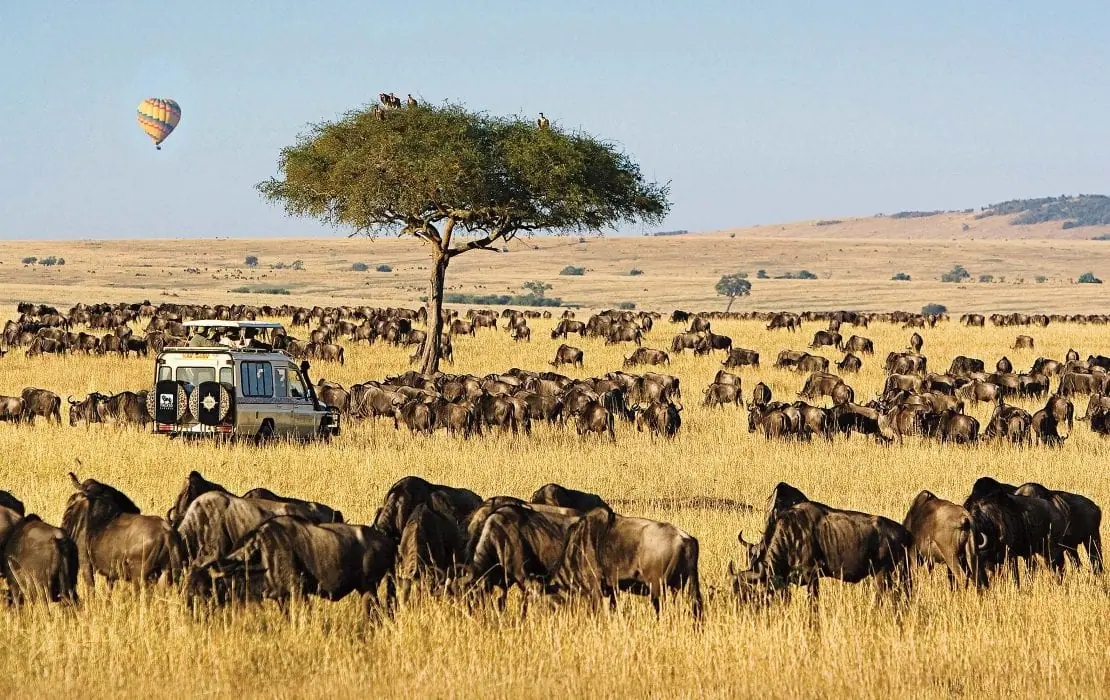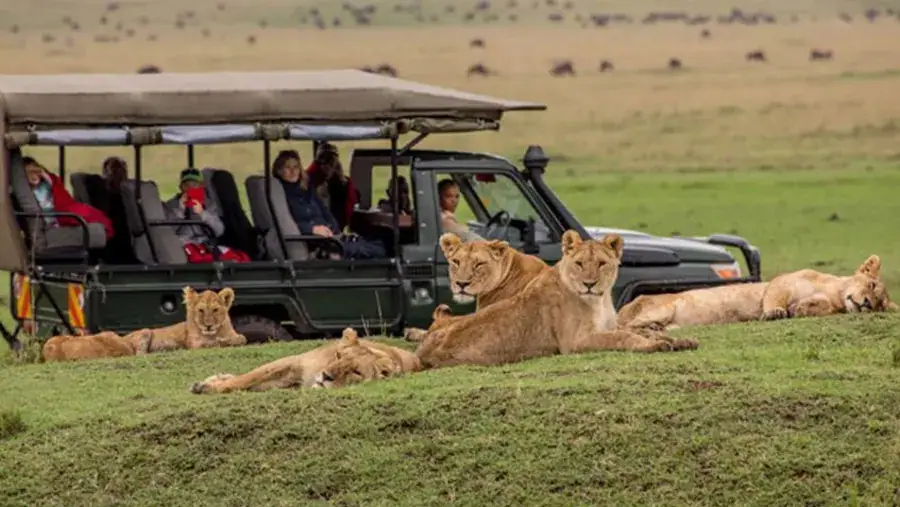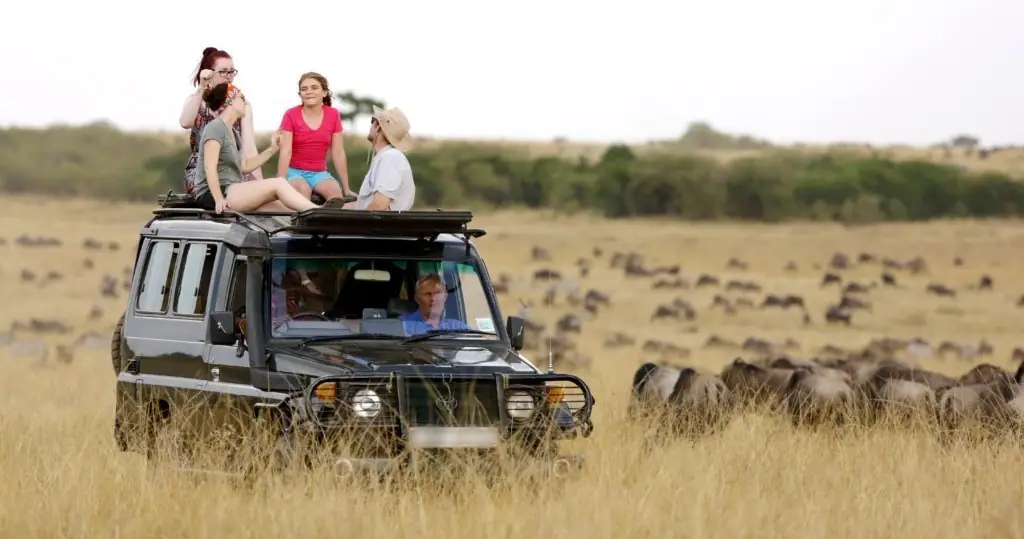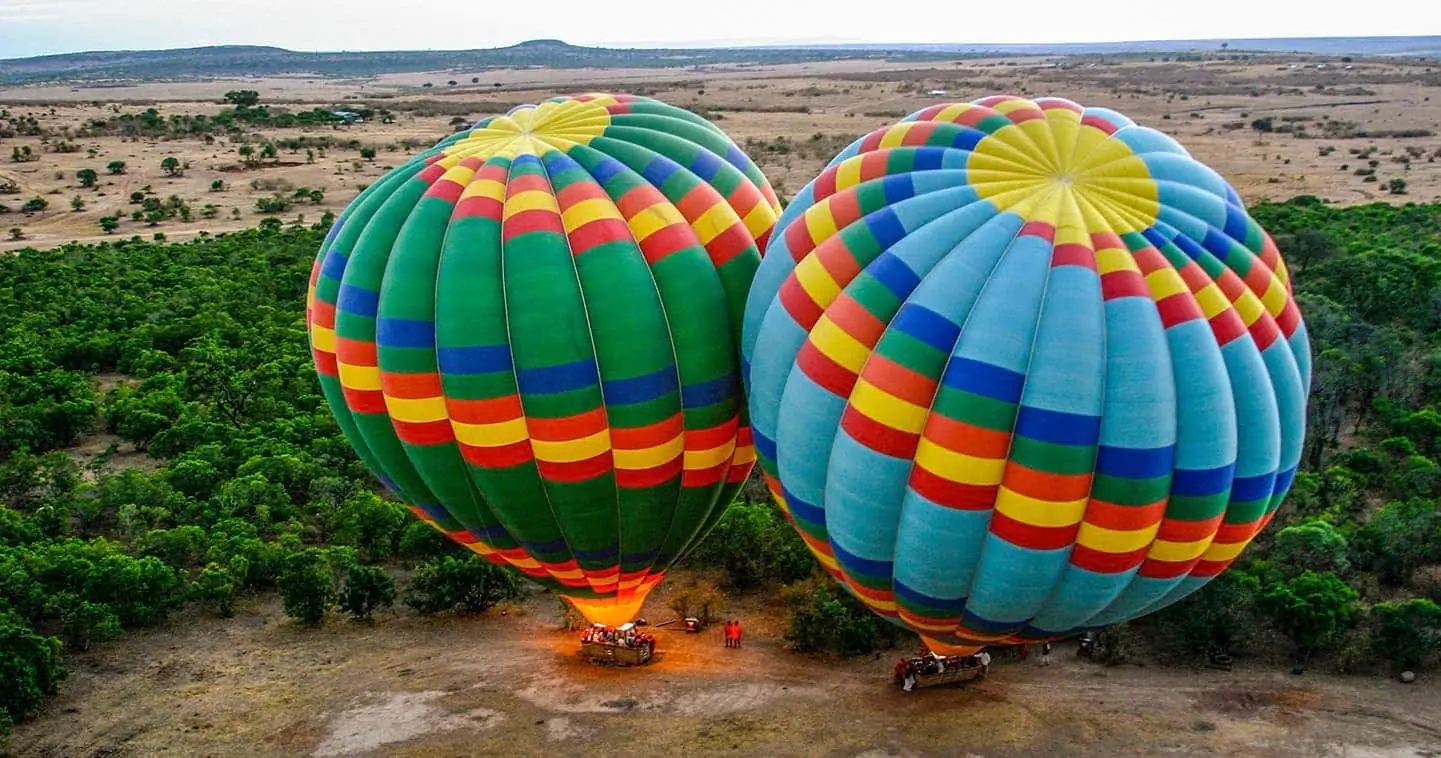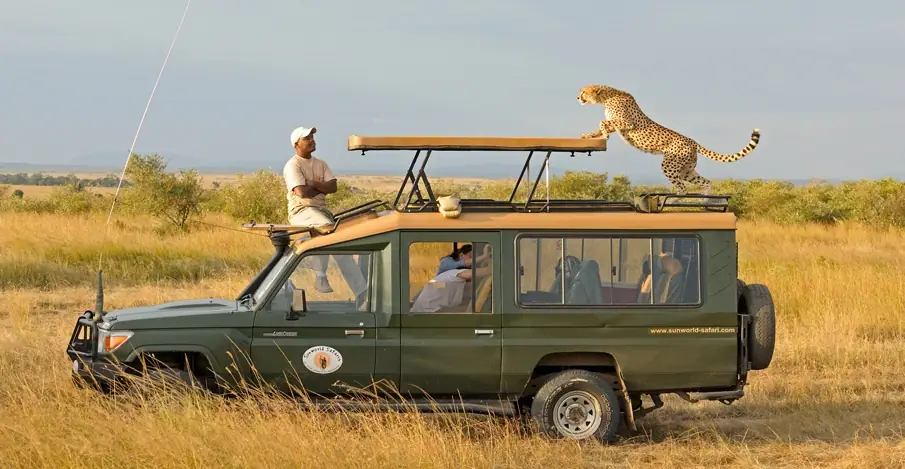Wildlife Masai Mara: A Guide to Iconic Animals and Habitats
Table of Contents
The Maasai Mara National Reserve, nestled in southern Kenya, is a premier destination for wildlife enthusiasts. The reserve is home to an astonishing diversity of bird species, with over 500 bird species present, including colorful examples like the Fischer’s Lovebird and the Kori Bustard.
As one of Africa’s most renowned wildlife conservation areas, it boasts an incredible abundance of animal life, including the iconic Big Five: African elephant, African buffalo, black rhino, lion, and leopard. The Masai Mara is one of the best places on earth to spot most of the ‘Big Five’ while out on safari. Black rhinos, known for their solitary nature, present a unique challenge for wildlife spotters due to their elusive behavior.
Part of the expansive Serengeti-Mara ecosystem, which spans over 25,000 square kilometers, the reserve is a sanctuary for diverse wild animals. The Maasai Mara, named after the indigenous Maasai people, is celebrated for its rich cultural heritage and breathtaking natural beauty. Every year, from July to October, the Great Migration draws visitors from around the globe, eager to witness this awe-inspiring wildlife spectacle. The best months for spotting wildlife in the Masai Mara are from June to October.
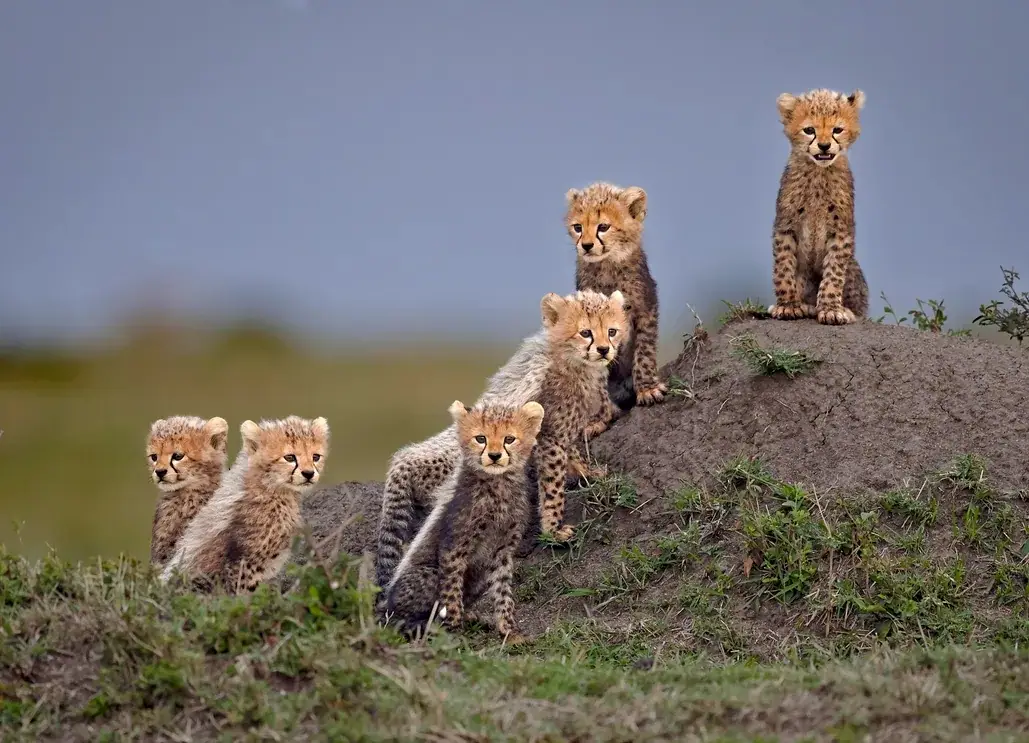
Big Cats and Large Mammals
The Maasai Mara is a haven for big cats such as lions, leopards, and cheetahs, some of the most iconic and elusive animals in the reserve. African lions are a common sight, with numerous prides roaming the open grassy plains and scattered trees. Approximately 850 to 900 lions live within the Masai Mara National Reserve and surrounding conservancies. Male lions, known for their powerful hind legs and dominant behavior, play a crucial role in the pride, while female lions are skilled hunters.
The reserve is also home to large mammals like the African elephant, African buffalo, and black rhino, integral members of the Big Five. The Mara Triangle, a significant area within the Maasai Mara, is notable for its population of black rhinos.
These majestic creatures are vital to the ecosystem, maintaining the delicate balance of nature. Despite being distinct species, there is very little visual differentiation in colour between white and black rhinos, making it challenging to distinguish them during wildlife observations.

Large Herbivores
The Masai Mara National Reserve is a sanctuary for a diverse array of large herbivores, each playing a crucial role in maintaining the balance of this vibrant ecosystem. Among the most iconic of these wild animals is the African elephant, the largest land animal on the planet.
With a significant population residing within the reserve and the surrounding conservancies, including the Mara Conservancy, these gentle giants are a symbol of the Maasai Mara. Elephants live in female-led groups called matriarchal herds. Their presence is vital, as they help shape the landscape by uprooting trees and creating pathways that other animals use.
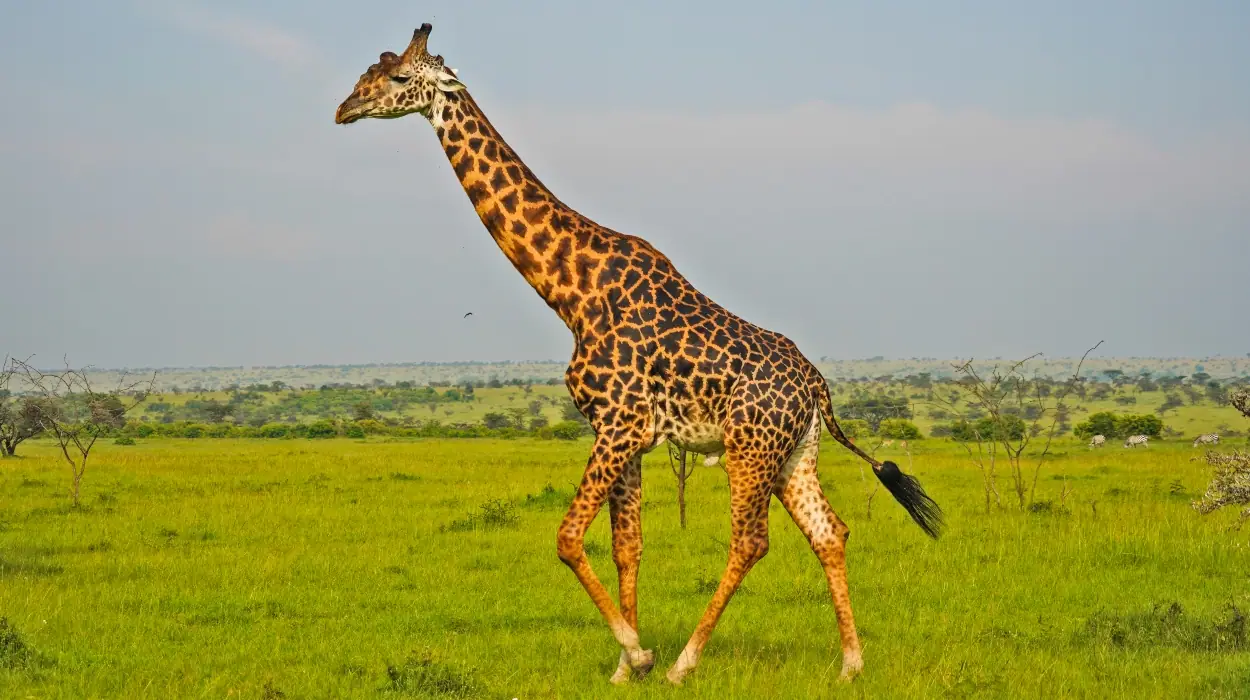
Another prominent resident of the Masai Mara is the Cape buffalo. Known for their formidable nature, these animals are often seen in large herds near water sources, especially during the dry season. The Mara River is a particularly favored spot. Despite their aggressive behavior when threatened, Cape buffaloes are a common sight and an integral part of the ecosystem.
The plains zebra is another herbivore that thrives in the Masai Mara. These striking animals are not only abundant but also play a pivotal role in the Great Migration. Each year, they journey in vast numbers between the Serengeti National Park in northern Tanzania and the Maasai Mara National Reserve in southern Kenya, a spectacle that draws visitors from around the world.
The reserve is also home to the reticulated or Somali giraffe, easily recognized by its distinctive coat patterns and long neck. These giraffes are often seen browsing on the leaves of acacia trees. The common eland, the largest antelope in the region, is another notable herbivore. These majestic animals can be found grazing in the open grassy plains, contributing to the biodiversity of the area.

Human-wildlife conflict poses a significant threat to these large herbivores. As human settlements and agricultural areas expand, these animals often come into contact with humans, leading to competition for resources and habitat loss. Conservation efforts, such as the establishment of national parks and game reserves like the Maasai Mara Game Reserve, are crucial in providing safe havens for these animals to thrive.
In addition to the more prominent herbivores, the Masai Mara is home to a variety of other species, including the mountain zebra, Thomson’s gazelle, and African hare. These animals can be seen roaming the reserve’s grasslands and woodlands, each contributing to the rich tapestry of life in the region.
Overall, the large herbivores of the Masai Mara are essential to the health and biodiversity of the ecosystem. Their conservation is not only vital for the animals themselves but also for the long-term sustainability of the entire region. Through continued efforts in conservation and sustainable tourism, the Masai Mara remains a beacon of hope for wildlife preservation in East Africa.
Conservation Efforts
The Maasai Mara Conservancy is dedicated to preserving the reserve’s ecosystems and wildlife through initiatives like habitat preservation and anti-poaching measures. Human encroachment is a critical threat to leopards’ habitats, contributing to their vulnerable status on the IUCN Red List.
Efforts to reduce human-wildlife conflict include compensating local people for crop damage and livestock losses. These conservation endeavors not only protect wildlife but also support local communities and promote sustainable tourism practices. As a non-profit organization, the conservancy relies on donations and visitor support to continue its vital work.
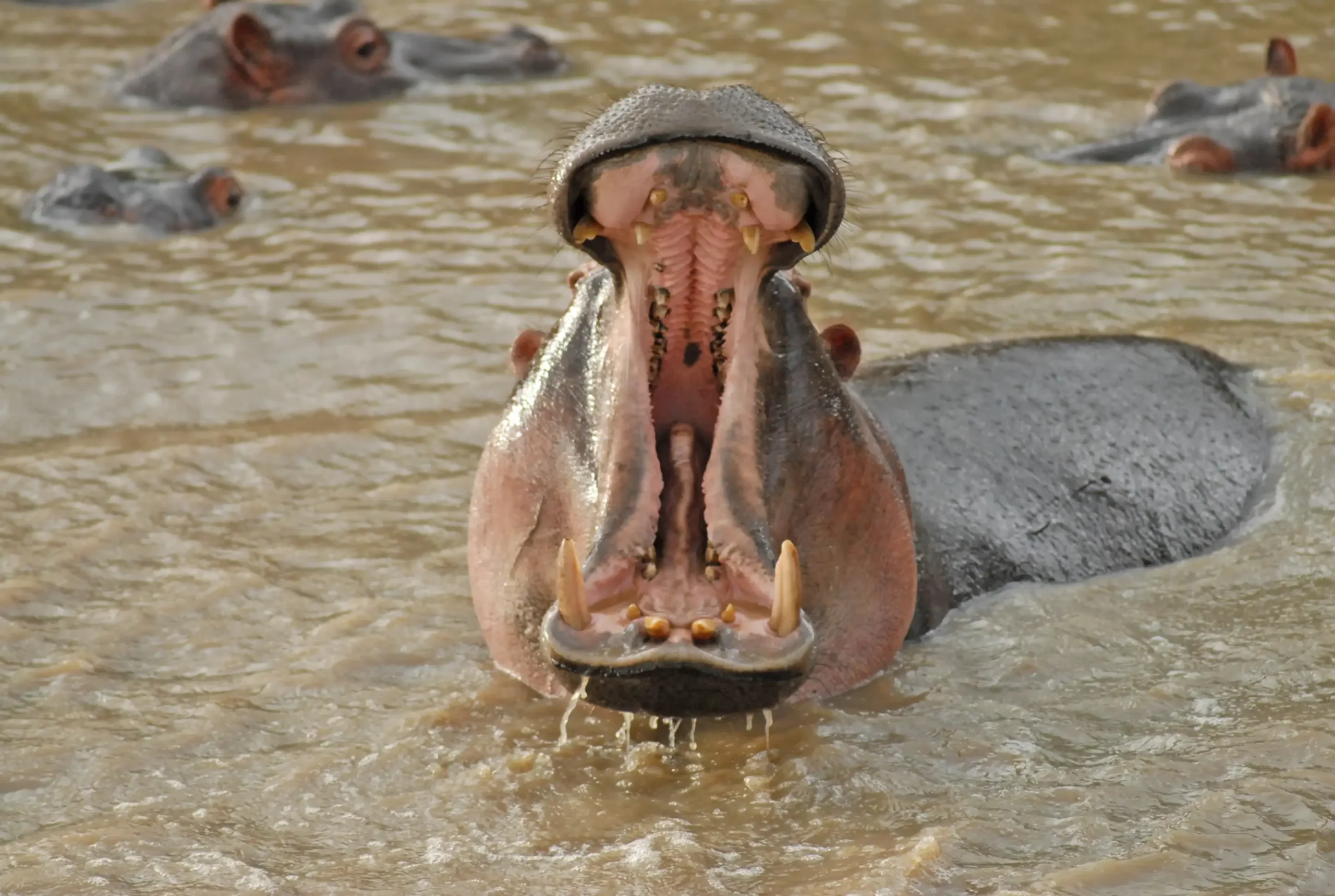
Wildlife Photography
The Maasai Mara is a paradise for wildlife photographers, offering the chance to capture images of the reserve’s iconic species. The diverse and abundant wildlife makes it an ideal location for photography safaris. Experienced guides help visitors capture the best shots, while also educating them about the Maasai Mara’s ecosystems and conservation efforts. Wildlife photography is a significant part of the tourism industry, promoting the reserve’s conservation initiatives.
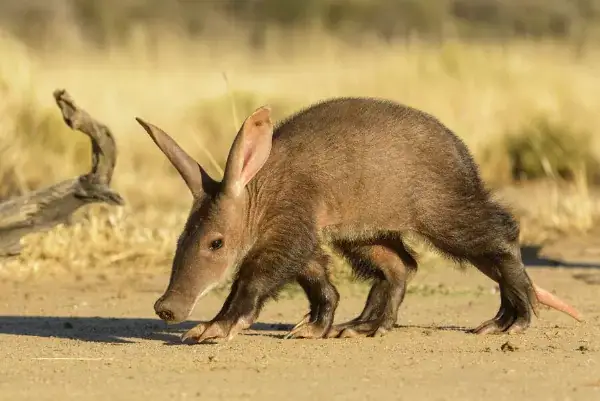
Safari Experiences
Visitors to the Maasai Mara can enjoy a variety of safari experiences, including game drives, walking safaris, and bird watching tours. Bird watching tours are particularly important due to the diversity of bird species in the region, with over 500 species including the colorful Fischer’s Lovebird and the Kori Bustard.
Knowledgeable guides enhance the safari experience, helping visitors make the most of their time in the reserve. These safaris offer a unique opportunity to witness the wildlife and ecosystems firsthand, while also supporting local communities and sustainable tourism practices. An unforgettable African wilderness adventure awaits those who embark on a Maasai Mara safari.
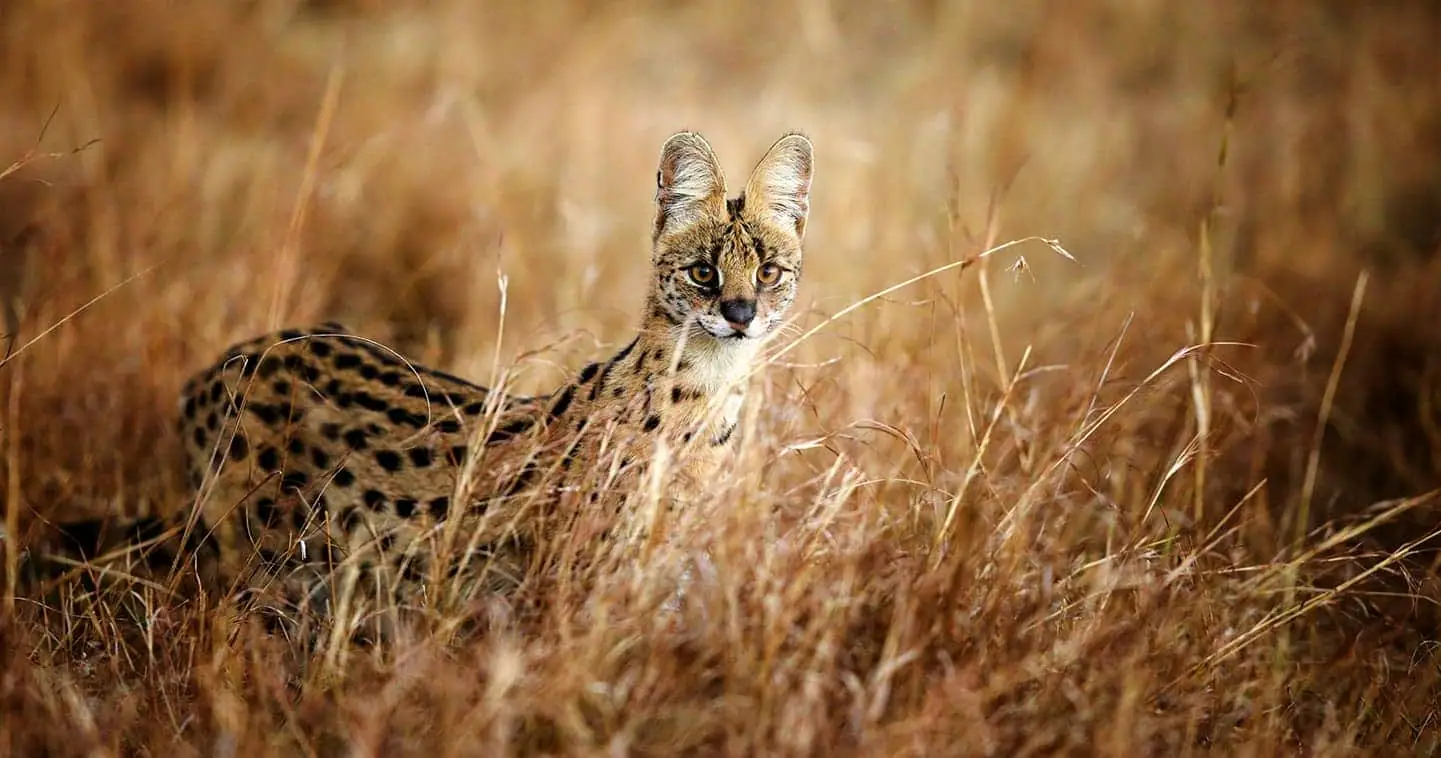
Animal Migration
The Great Migration is a highlight of the Maasai Mara, occurring annually between July and October. This spectacular event sees over a million wildebeest, zebras, and antelopes traverse the reserve, playing a crucial role in the ecosystem’s balance. The Great Migration is an annual trek from the Serengeti to the Masai Mara by millions of wildebeest, zebras, and gazelles. The migration is a major draw for tourists, offering a once-in-a-lifetime experience to witness this natural wonder.
Community-Based Conservation
The Maasai Mara Conservancy collaborates with local communities to promote community-based conservation through wildlife-friendly agriculture and ecotourism initiatives. By providing employment and education opportunities, the conservancy encourages local support for conservation efforts. This approach fosters sustainable livelihoods, reduces human-wildlife conflict, and strengthens the local economy, creating a win-win situation for both people and wildlife.
Tourism and Conservation
Tourism is integral to the Maasai Mara’s conservation efforts, supporting the reserve’s ecosystems and wildlife. It also bolsters the local economy, providing employment and income opportunities.
The tourism industry emphasizes sustainable and responsible practices to minimize environmental and community impact. By highlighting the value of conservation, tourism plays a crucial role in protecting the Maasai Mara’s ecosystems and wildlife.
Threats to Wildlife and Human Wildlife Conflict
Despite its beauty, the Maasai Mara faces threats like habitat loss, human-wildlife conflict, and poaching. The Cape Buffalo, one of the most dangerous animals in East Africa, is particularly aggressive, especially lone males and females protecting their young.
Climate change further exacerbates these challenges, altering ecosystems and disrupting nature’s balance. Conservation efforts aim to address these threats, promoting sustainable livelihoods and reducing conflict through initiatives like wildlife-friendly agriculture. These efforts are vital to safeguarding the Maasai Mara’s wildlife and ecosystems, ensuring a sustainable and equitable future for all.
The Maasai Mara National Reserve is a testament to the beauty and diversity of African wildlife. Its iconic animals, conservation efforts, and community involvement make it a model for sustainable tourism and a beacon of hope for wildlife preservation in East Africa.
Other Information About Masai Mara and Conservancy:
Welcome to AjKenya Safaris
Thanks for stopping by! We’re excited to help you plan an unforgettable safari.
- Phone: +254 748 258880
- WhatsApp: +254 748 258880
- Email: [email protected]
- Email: [email protected]

